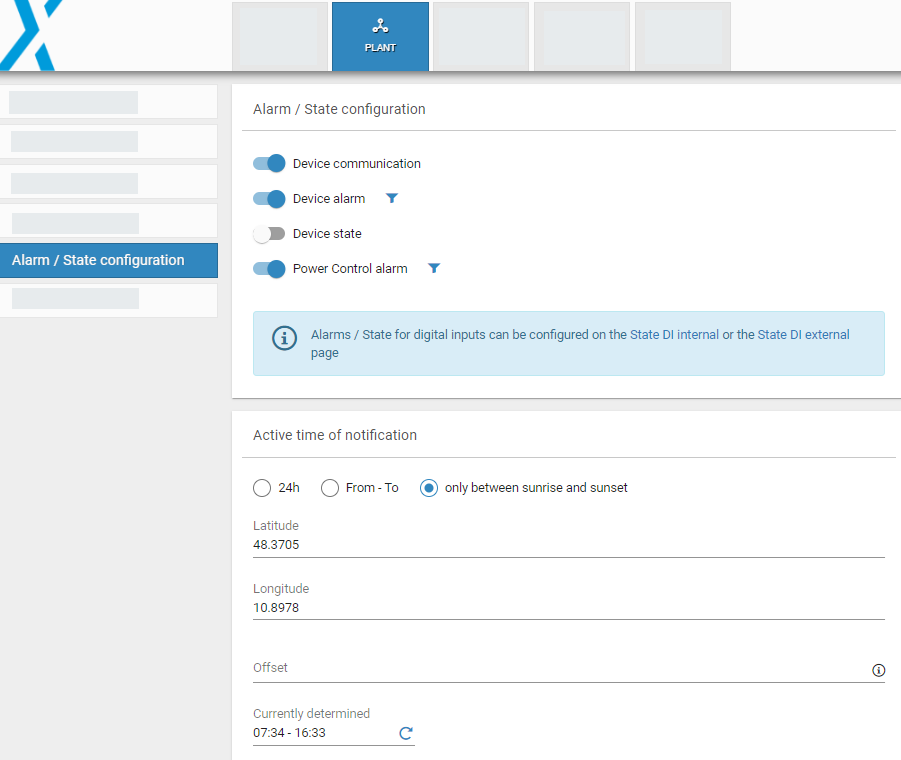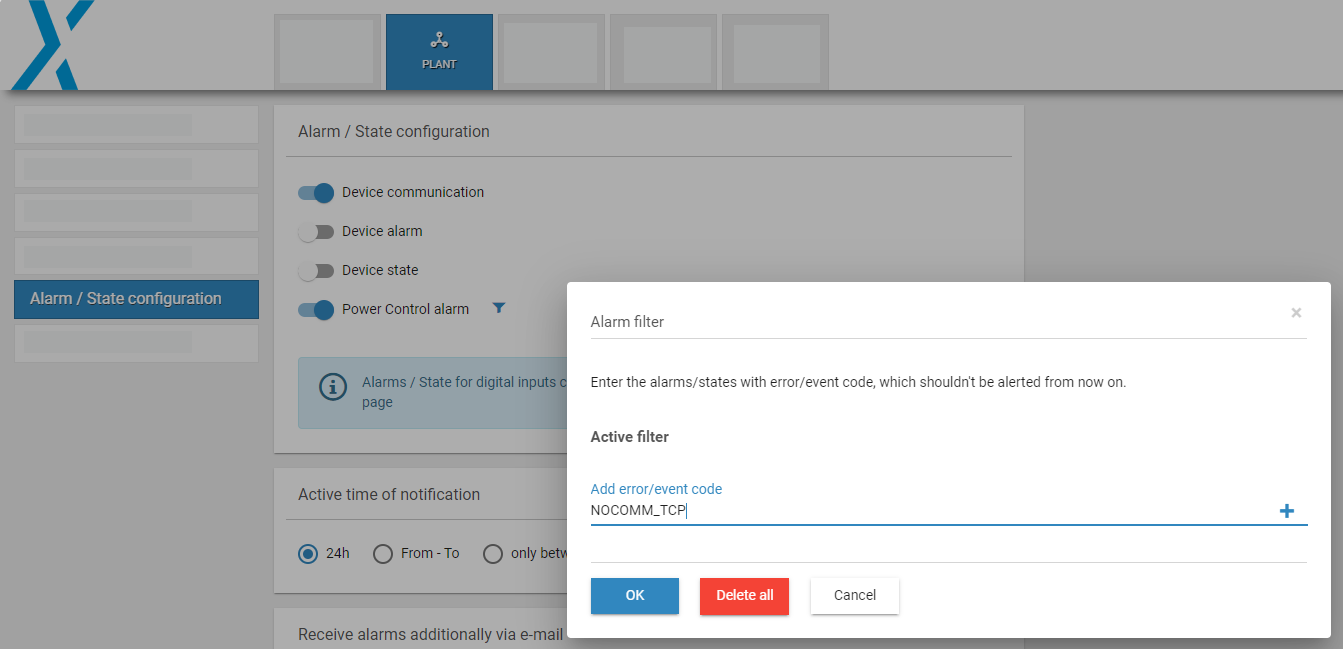Alarm/state configuration
Last modified:
About alarm and state types
Under Plant > Alarm/state configuration, you can configure alarms to alert you to technical issues with your blue'Log and its connected devices.
When an alarm is triggered, the information is sent to:
Email recipients (as configured)
VCOM (VCOM USERS)
Further information:
For a full list of alarms that can be generated by the blue’Log, see List of alarms.
To view all triggered alarms and states, go to Cockpit > Alarms/State.
Alarm and state types
You can activate and filter the following alarm and state types:
Type | Details |
|---|---|
Device communication | Notifications about RS485 or TCP/Ethernet communication failures. |
Device alarm | Notifications of devices connected to the blue'Log, such as inverters and meters. Example (Sunspec alliance compatible inverter):
|
Device state | Notifications of states of devices connected to the blue'Log, for example inverters and meters. Example (Sunspec alliance compatible inverter):
|
Power control alarm | Activate the toggle to receive notifications of power control issues. |
Note
If a connected device sends excessive alarms or states, the system will automatically disable alarm and/or state notifications. You will receive one of the following notifications:
ALARM_DB_FULL: alarm database is full / the device alarming was deactivated
STATE_DB_FULL: state database is full / the device alarming was deactivated
POWER_CONTROL_ALARM_DB_FULL: database for power control alarms is full
VCOM USERS The Smart alarms feature in VCOM is an efficient means of handling unwanted alarms.
Activate alarms and the notification period
Prerequisites
Device state alarms: Firmware 22.0.0 or higher.
Power control alarms: Firmware 27.07 or higher. For firmware below 27.0.7, you can find the power control alarms under Device alarm.
All other alarms are available with all firmware versions.
To configure alarms/state for digital inputs, see Status DI internal and Status DI external.
Steps
Go to Plant > Alarms/state configuration > Alarm/state configuration.
Activate the toggles for the desired alarm types.
Under Active time of notification, select the desired notification period.
Default: 24 hours
Sunrise to sunset: Enter the site's Latitude and longitude and the desired time Offset. Example: If the time is set to 6:00 AM - 6:00 PM with an offset of 10, notifications will be sent from 6:10 AM - 5:50 PM.

Activate alarms and the notification period
Set up email notifications
You can configure email notifications of alarms.
Steps
Go to Plant > Alarm/State configuration.
Select Receive alarms additionally via email.
Enter email recipients, separating multiple recipients with a comma.
VCOM USERS Alarms will be transmitted and displayed in the VCOM alarm portlets.
Non-VCOM users: You can choose to receive alarms via email.
Select the language for alarm notifications.
English is the default if the alarms are not available in all languages
VCOM USERS The language in which alarms are sent depends on your VCOM language settings.
Filter undesired notifications
The ![]() Filter allows you to exclude specific error/event codes from notifications. This is useful if you want to avoid notifications for certain issues (for example, communication failures).
Filter allows you to exclude specific error/event codes from notifications. This is useful if you want to avoid notifications for certain issues (for example, communication failures).
Prerequisites
Device state alarms: from Firmware 22.0.0 on.
Power control alarms: from Firmware 27.07 on. For firmware below 27.0.7, power control alarms are listed under Device alarm.
All other alarms are available in all firmware versions.
Steps
Go to Plant > Alarms/state configuration.
Select the
 Filter next to the alarm type you want to filter.
Filter next to the alarm type you want to filter.A window will appear. Enter the error or event code for the alarms you want to exclude. The relevant error or event codes are under Cockpit > Alarms/state > Error code.

Example of an undesired notification

Activate a filter for undesired notifications
.png)